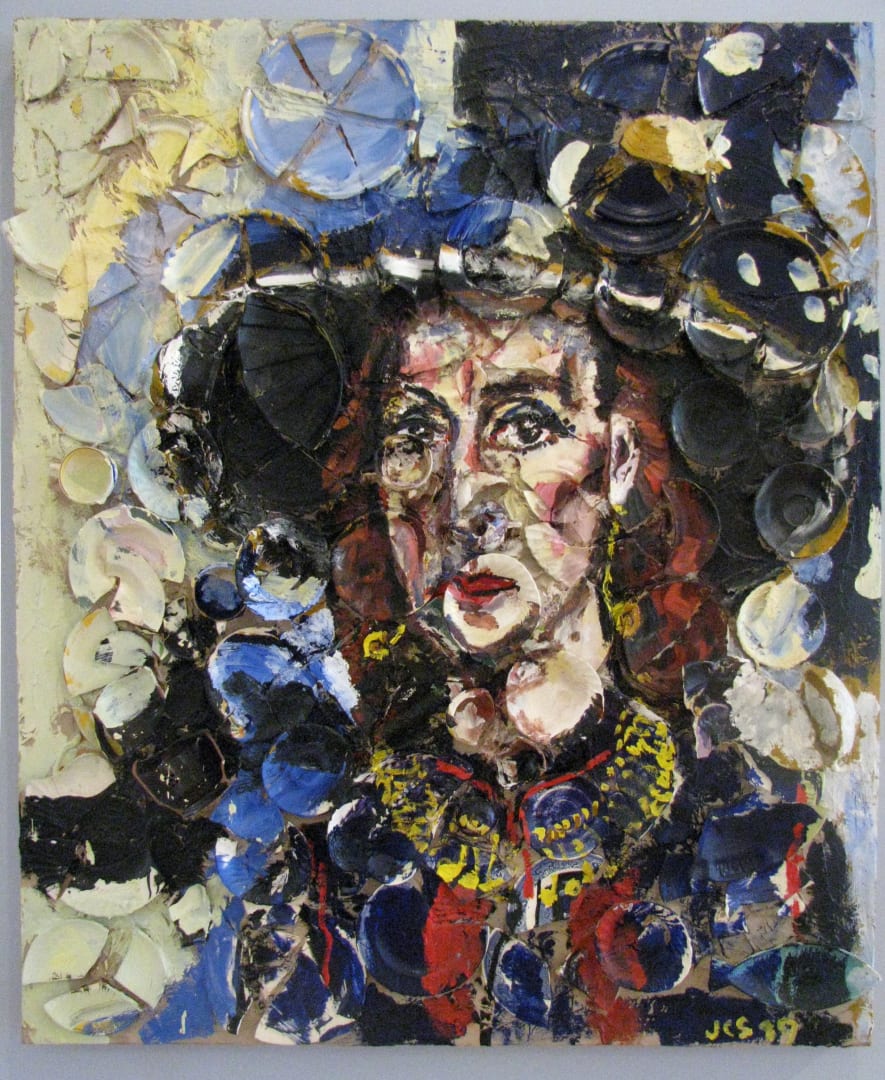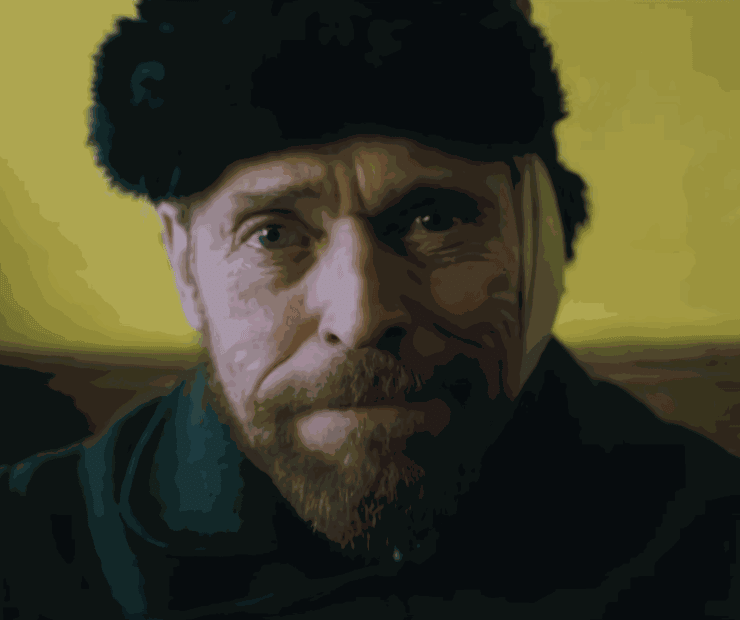Julian Schnabel
-
 Julian SchnabelView of Dawn from the Tropics- Allen(cordial love), 1998Hand Painted 15-17 Color Screenprint With Poured Resin45 x 36 ins 114.3 x 91.44 cm
Julian SchnabelView of Dawn from the Tropics- Allen(cordial love), 1998Hand Painted 15-17 Color Screenprint With Poured Resin45 x 36 ins 114.3 x 91.44 cm -
 Julian SchnabelView of Dawn from the Tropics-Bandini(his foe pursued), 1998Hand Painted 15-17 Color Screenprint With Poured Resin45 x 36 ins 114.3 x 91.44 cm
Julian SchnabelView of Dawn from the Tropics-Bandini(his foe pursued), 1998Hand Painted 15-17 Color Screenprint With Poured Resin45 x 36 ins 114.3 x 91.44 cm -
 Julian SchnabelView of Dawn from the Tropics-Roy, 1998Hand Painted 15-17 Color Screenprint With Poured Resin45 x 36 ins 114.3 x 91.44 cm
Julian SchnabelView of Dawn from the Tropics-Roy, 1998Hand Painted 15-17 Color Screenprint With Poured Resin45 x 36 ins 114.3 x 91.44 cm
Julian Schnabel has been attracting public attention since his enormous plate paintings were shown at New York's Mary Boone Gallery in 1979. Schnabel loves the attention and makes public appearances in pajamas or sarongs. He went from being a well-known painter to an award-winning filmmaker and continues to do both successfully.
Early Life and Education
Julian Schnabel was born in Brooklyn in 1951. In a 60 Minute interview, he said that two of the greatest influences in his life were seeing Rembrandt's Aristotle Contemplating the Bust of Homer when his mother took him to the Met when he was ten, and watching Cecil B. Demille's The Ten Commandments. He said that it was the light in the painting and the grandeur and tension in the film that influenced his later work.
When Schnabel was fifteen, the family moved from Brooklyn to Brownsville, Texas. Schnabel learned to surf, took advantage of the marijuana traveling through Brownsville and decided he wanted to become an artist. He received his B.F.A. from the University of Houston and then applied for a spot at the Whitney Museum's Independent Study Program. Along with his application, Schnabel sent slides of his work sandwiched between two slices of bread. He was accepted to the program.
Career and Personal Life
Back in New York, Schnabel worked as a cook, drove a cab and hung out at Max's Kansas City night club. After his show at the Mary Boone Gallery, Schnabel had more exhibits, his plate paintings became highly collectable and his reputation as a neo-expressionist artist, with a bold persona, was solidified.
Schnabel produces large works in wax, resin, on velvet, with found objects, on tarps and lithographs with hand painted elements.
In 2007, Schnabel won the director's prize at Cannes for his French language film, The Diving Bell and the Butterfly. Schnabel wrote and directed the successful biopics Basquiat, Before Night Falls, Lou Reed's Berlin and Miral.
Schnabel has an enormous studio, dubbed The Pink Palace, in Greenwich Village, another studio on Montauk and a house in San Sebastian. He has been married twice and has six children by three different women.
Schnabel's works are part of the permanent collections of the Met, MoMA, the Tate Modern, the Centre Georges Pompidou and other fine venues around the world.
-

Jean-Michel Basquiat: Remastered
June 25, 2025I cross out words so you will see them more….the fact that they are obscured makes you want to read them. - Jean-Michel Basquiat The...Read more -

Julian Schnabel Does Van Gogh
January 21, 2019Julian Schnabel’s latest film At Eternity’s Gate chronicles the last two years of the life of Vincent Van Gogh, a time when the artist lived in the south of France, was most prolific and most depressed. Van Gogh is played by Willem Dafoe, who was nominated for Best Actor in a drama at this years’ Golden Globe Awards. The role has also gotten Dafoe an Oscar nomination. He’s had three previous Oscar nominations, but this is his first in the lead actor category.Read more






